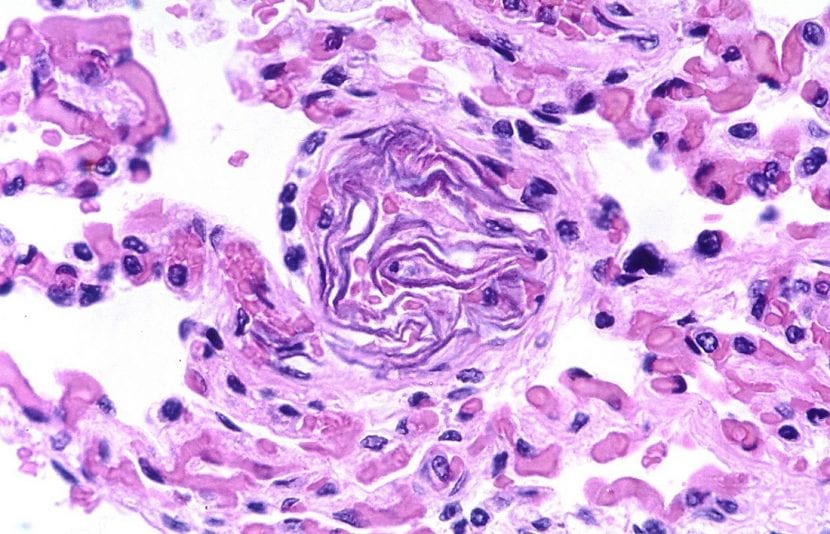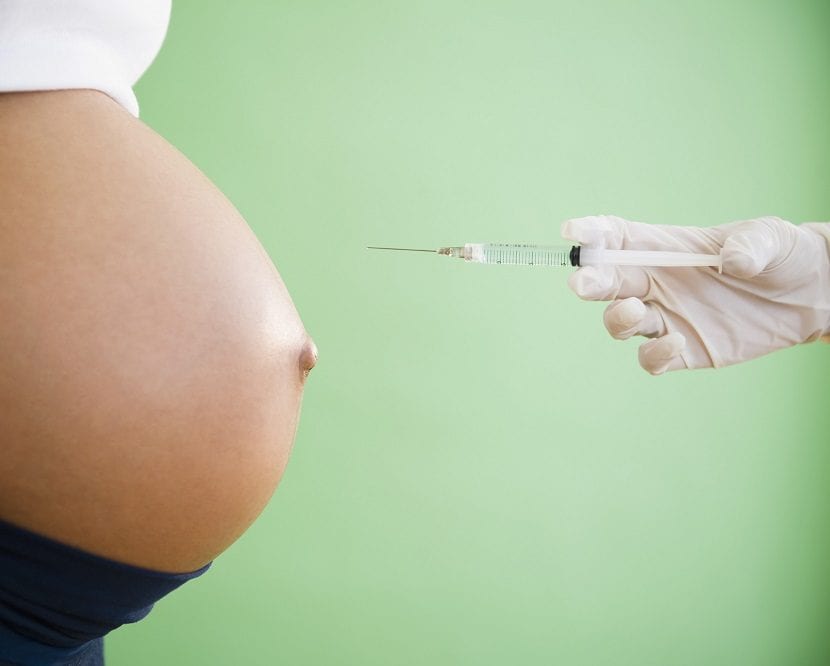
El amniotic fluid is that clear fluid, and a little yellow that surrounds the fetus inside the uterus. As long as the baby remains in the uterus, it will float in this liquid, in an amount of approximately 600 milliliters on average. We tell you that from week 34 to 40 is when you will produce more amniotic fluid, reaching up to 1.000 milliliters in week 38 and dropping 20%, in general, at the time of delivery.
One interesting thing is that amniotic fluid has recently been shown to contains embryonic and extra-embryonic tissue cells differentiated and undifferentiated.
Functions of the aminiotic fluid
Amniotic fluid is of vital importance in the development of pregnancy since regulates the temperature of the embryo and after the fetus, it incorporates nutrients, cushions the movements of the fetus for the mother and vice versa, protects from infections external and facilitates delivery.
This liquid constantly moving as the baby swallows it and releases it through his own urine, which in turn will be one of the important factors in its creation.
How do I know if I am leaking urine or amniotic fluid?

This is a very frequent question among pregnant women, so it is logical that you also have it. There's a panty liner that detects the loss of amniotic fluid. They sell it in pharmacies. In this panty liner there is a strip that reacts by changing color, if it is yellow it is urine, but if it is green or bluish, then it indicates that you are losing amniotic fluid.
El vaginal discharge is more viscous and thick, with a characteristic smell in each woman.
If you are in the last weeks and you have doubts if you have broken water, which is the popular expression with which the ruptured amniotic sac is known, or it has been torn, take a walk (which as you know facilitates delivery) and cough several times, if the underwear has gotten wet it is time to seek medical advice. If, on the other hand, it is dry, you will have to continue walking a little more.
Before the most minimal suspicion of loss of amniotic fluid, we recommend that you go to your doctor, to assess the amount of fluid there is through an ultrasound.
En this article You have more information about the possible colorations of the amniotic fluid.
Is it dangerous to have an amniocentesis?

Una amniocentesis rules out the presence of certain chromosomal and genetic defects in the baby. It is done during the second trimester of pregnancy, between 15 and 18 weeks after the last menstrual period. It may happen that after amniocentesis, there is some loss of amniotic fluid, so the woman is especially monitored after the practice. The normal thing is that fissure heals on its own, the leak stops and the fluid returns to its normal level.
We explain what this test consists of. First they do a scan to see how the fetus and the placenta are positioned, a long needle is inserted into the uterus, without anesthesia. About 140 milliliters of fluid are withdrawn from the amniotic sac. The cells contained in this liquid are separated by centrifugation, and cultured for two and a half to five weeks.
Amniotic fluid and food allergies

In the case of food allergies, these do not occur the first time the food is ingested, but after several intakes. However, There are children who, without having taken this food previously, already develop symptoms. This is because for an allergy to develop there must also be a genetic predisposition, and as we said, having had previous contact with the allergen.
Well, a team of researchers from the Jiménez Díaz Foundation in Madrid, demonstrated the presence of food allergens in amniotic fluid of fetuses in gestation. This means that the baby's food sensitization process occurs from the womb. Before what was believed. During the first 20 weeks of gestation, which is when the mother is 100% responsible for "manufacturing" the amniotic fluid, she will be responsible for transmitting these allergens.